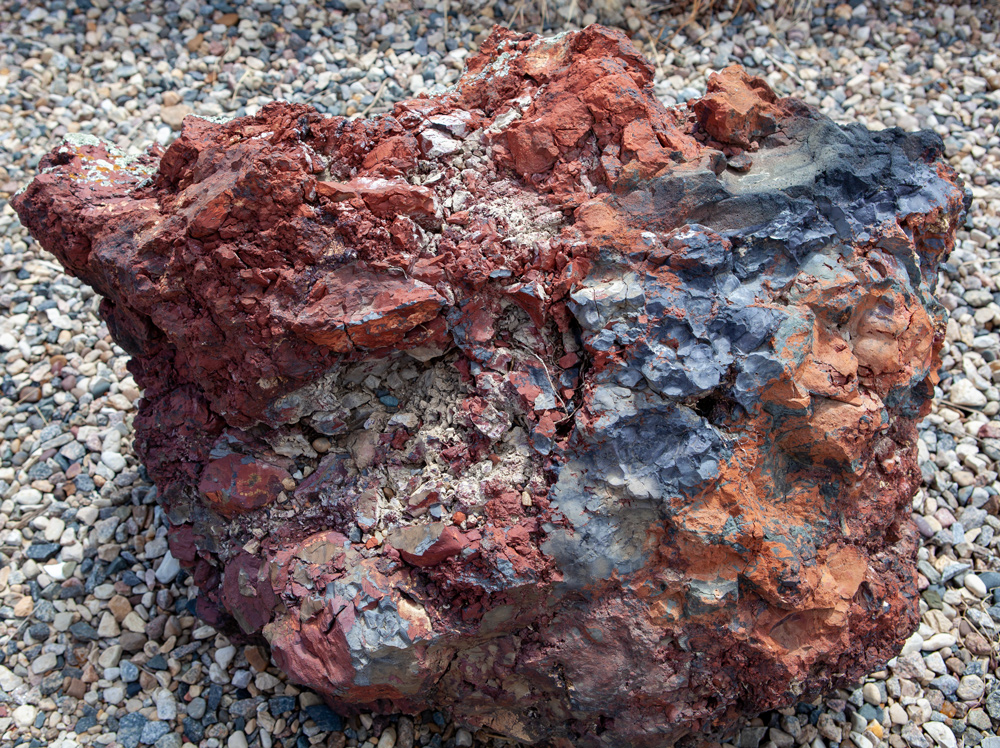On the Missouri River shore about five miles north of Fort Mandan, Sgt. Gass and two enlisted men guard the new dugout canoes. Clark collects echinacea and clinker and conducts an experiment with the latter.
A Hill of Pumice Stone
by Yellowstone Public Radio[1]Originally aired weekdays by Yellowstone Public Radio during the Bicentennial observance of 2003-2006. Narrated by Hal Hansen. Scripts by Whit Hansen and Ed Jacobson. Produced by Leni Holliman. © … Continue reading
Clinker
© 2013 by Kristopher K. Townsend. Permission to use granted under the Creative Commons Attribution-Share Alike 4.0 International license.
Collecting Clinker
on my return I passed on the points of the high hills S. S. where I saw an emence quantity of Pumice Stone, and evident marks of the hills being on fire I collected some Pumice Stone, burnt Stone & hard earth and put them into a furnace, the hard earth melted and glazed the other two a part of which i, e, the Hard Clay became a Pumice-Stone
—William Clark
Moving Two Dugouts
the men Carried the remaining the 2 remained Canoes to the River, all except 3 left to take care & complete the Canoes
—William Clark
Collecting Echinacea
I also collected a Plant the root of which is a Cure for the Bite of a mad dog & Snake which I shall Send—
—William Clark
Weather Diary
State of Ther. at rise
Weather wind at rise
State of Thermt. at 4 OClock Weather at 4 Ock Wind at 4 OClock State of the River 16 [above 0] cloudy E 26 [above 0] snow and hail S some ducks seen to light in the river opposit the fort
—Meriwether Lewis[2]To assist the reader, the editor of this web page has omitted the “Day of Month 1805” column and spelled out some abbreviations.
Experience the Lewis and Clark Trail
The Lewis and Clark Trail Experience—our sister site at lewisandclark.travel—connects the world to people and places on the Lewis and Clark Trail.
Plan a trip related to March 21, 1805:

Fort Mandan is a High Potential Historic Site along the Lewis and Clark National Historic Trail managed by the U.S. National Park Service. The North Dakota Department of Parks and Recreation manages a modern reconstruction and the Lewis and Clark Interpretive Center located at US Hwy 83 and ND Hwy 200A.
Knife River Indian Villages National Historic Site is a High Potential Historic Site along the Lewis and Clark National Historic Trail managed by the U.S. National Park Service. A unit of the National Park System, the site is located at 564 County Road 37, one-half mile north of Stanton, North Dakota. It has exhibits, trails, and a visitor center.
Notes
| ↑1 | Originally aired weekdays by Yellowstone Public Radio during the Bicentennial observance of 2003-2006. Narrated by Hal Hansen. Scripts by Whit Hansen and Ed Jacobson. Produced by Leni Holliman. © 2003 by Yellowstone Public Radio. |
|---|---|
| ↑2 | To assist the reader, the editor of this web page has omitted the “Day of Month 1805” column and spelled out some abbreviations. |



